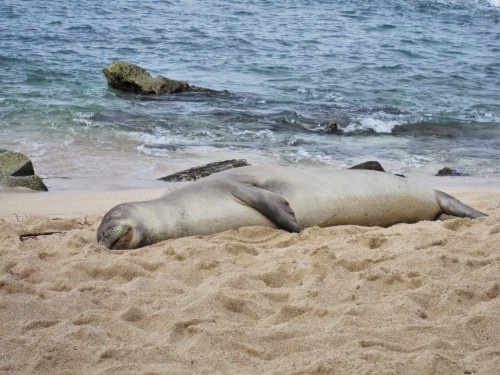
We’ve all been there. A friend, family member, or complete stranger asks us what we do and within a few seconds of giving what we think is the most accurate and thorough explanation of our research and passion for marine mammal conservation, their eyes glaze over a bit or they politely nod their head to feign interest and understanding. And then perhaps they smile, say “how interesting”, and walk away leaving you baffled that they didn’t ask more questions or seem more absorbed in multicovariate distance sampling for estimating densities, oxygen isotope analyses of cetacean dentine, or the pleiotropic role of blubber. Hmm…maybe our communication skills need some tweaking.
What can we do to improve our outreach and communication skills so that we can engage others, particularly policy makers, in our research findings? This was the very topic of one of the liveliest and most insightful panel discussions at the recent 21st Biennial Society for Marine Mammalogy (SMM) Conference on the Biology of Marine Mammals held in San Francisco, California in December 2015. The panel “How to Make Your Science Matter” was moderated by Nancy Baron, the Director of Science Outreach for COMPASS, a non-profit organization devoted to helping scientists effectively engage in the public discourse and decision-making about the environment. COMPASS’ team empowers scientists to build communication skills, networks, and relationships through trainings, coaching, and real-world connections. “Good leaders are also good communicators.” Nancy’s statement during her introduction of the panel session really hit home for many of us in attendance. If we want our science to change the world and ultimately contribute to the conservation of the animals we study, then we need to be true leaders in our field of study, and we must learn how to communicate our science to our intended audiences.
The six panel members included scientists, journalists, and editors who each gave great tips and insight on how all scientists can improve their communication skills. Dr. Jane Lubchenco (U.S. Science Envoy for the Ocean and former head of NOAA) kicked off the panel discussion. She suggested that we learn to listen, have a core message that includes answers to the “why care?” question, be warm and not just competent, and learn the language of lay people.
Nick Gales (SMM President) stressed the importance of taking science to policy, which is a particularly important action for scientists studying right whales and other threatened and endangered species. He suggested that we delve into the social sciences a bit by learning what drives stakeholder behaviors. We can more effectively communicate our research findings to policy makers, managers, and other stakeholders if we understand what drives their social and economic behaviors. Nick also reminded us that the science required for policy changes may not be publishable but is still important to influence change.
Marcia McNutt (former head of the U.S. Geological Survey and current editor-in-chief of Science magazine) encouraged us to frame our science discussions to our audience. To do so, we must first learn who our audience is, what motivates them, and what we want them to do with the information we provide. Our outreach approach may differ depending on our audience and the actions we want them to take.
Charles Littnan (leader of the NOAA Fisheries Hawaiian Monk Seal Research Program) emphasized the importance of showing the public some hope for our research subjects and/or programs. This may be difficult for some of us whose research subjects and circumstances appear to be all doom and gloom. However, according to Charles, the public is more likely to support your research if you show that there is at least a small bit of hope. Charles also suggested designing research studies to involve citizens in order to gain local trust. For example, NOAA Fisheries has successfully gained the trust and support of local Hawaiians by involving them in crittercam research on Hawaiian monk seals.
To those scientists who expressed difficulties in getting certain people interested in their work, David Malakoff (Science Deputy News Editor) said “every story has an audience”. We are lucky that our research subjects are naturally charismatic and interesting to the general public. However, our specific research topics may not seem inherently stimulating to our current audience. Therefore, we can alter our communication techniques to express our research in a way that resonates with our current audience, and we may also need to find a new target audience.
Ken Weiss, a Pulitzer Prize-winning writer, offered a nice lead-in to the introduction of the 14 SMM 2015 Journalist Fellows who write and produce for a variety of outlets, such as BBC, National Geographic, The New York Times, Science, and Nature. Ken encouraged us to speak to journalists so that we can help them tell our stories. As a follow-up to the panel discussion, COMPASS hosted a reception during which scientists could practice engaging the Fellows in their research in hope that the journalists would share their stories with the world. During the conference, COMPASS also offered a hands-on workshop for scientists to practice their 30-second elevator speech on journalists.
Using the excellent tips shared by the panel, we must now regularly plan, practice, and perfect our communication skills so that we can all find our voice and effectively bring our science into the conversation whether that’s in an elevator speech or in a meeting with policy makers.
For more tips and tools for communicating your science, check out these links…

